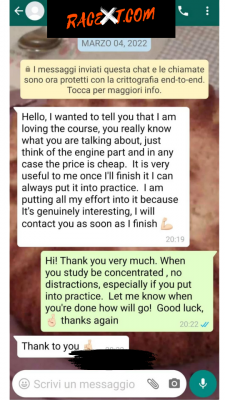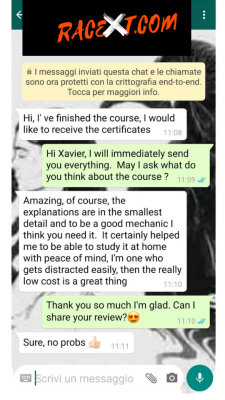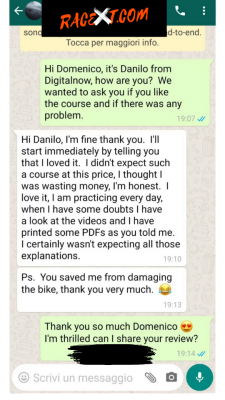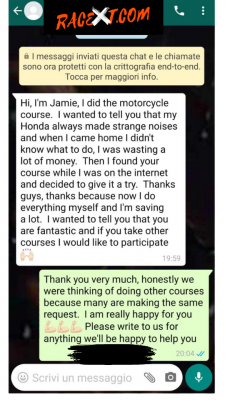Non categorizzato
Troubleshooting common motorcycle issues
Troubleshooting Common Motorcycle Issues
Motorcycles are a popular mode of transportation, but they can also be complex to diagnose and repair if something goes wrong. If you’re experiencing a motorcycle problem, it’s important to know how to troubleshoot the issue in order to fix it safely and effectively.
Common Motorcycle Issues
Some of the most common motorcycle issues include:
- Engine problems: These can include issues such as knocking, pinging, or backfiring. Engine problems can be caused by a variety of factors, such as a bad spark plug, a dirty carburetor, or a worn piston ring.
- Electrical problems: These can include issues such as a dead battery, a blown fuse, or a faulty ignition switch. Electrical problems can be caused by a variety of factors, such as a loose connection, a short circuit, or a bad component.
- Driveline problems: These can include issues such as a slipping clutch, a noisy gearbox, or a worn chain. Driveline problems can be caused by a variety of factors, such as a lack of lubrication, a worn part, or a misalignment.
- Suspension problems: These can include issues such as a bouncy ride, a loose or worn shock absorber, or a leaking fork seal. Suspension problems can be caused by a variety of factors, such as improper adjustment, a worn component, or a damaged or bent part.
- Brake problems: These can include issues such as a spongy brake pedal, a squealing brake pad, or a leaking brake line. Brake problems can be caused by a variety of factors, such as worn pads or shoes, a leak in the brake system, or a faulty master cylinder.
Troubleshooting Motorcycle Issues
If you’re experiencing a motorcycle problem, the first step is to try to identify the issue. This can be done by visually inspecting the motorcycle, listening for unusual noises, and checking the motorcycle’s fluid levels. Once you’ve identified the issue, you can begin troubleshooting it.
Here are some tips for troubleshooting common motorcycle issues:
- Check the spark plug: A bad spark plug can cause a variety of problems, including knocking, pinging, and backfiring. To check the spark plug, remove it from the engine and inspect it for damage or wear. If the spark plug is fouled or damaged, replace it.
- Clean the carburetor: A dirty carburetor can cause a variety of problems, including poor fuel economy, hesitation, and stalling. To clean the carburetor, remove it from the engine and disassemble it. Clean all of the carburetor’s components with a carburetor cleaner and compressed air. Once the carburetor is clean, reassemble it and reinstall it on the engine.
- Inspect the fuel system: A clogged fuel filter or a dirty fuel injector can restrict fuel flow and cause the engine to run poorly. To inspect the fuel system, remove the fuel filter and inspect it for dirt or debris. If the fuel filter is dirty, replace it. To clean a fuel injector, use a fuel injector cleaner and compressed air.
- Check the ignition system: A faulty ignition switch, a bad ignition coil, or a worn distributor cap can all cause the engine to run poorly. To check the ignition system, inspect all of the ignition system’s components for damage or wear. If any of the components are damaged or worn, replace them.
- Inspect the driveline: A slipping clutch, a noisy gearbox, or a worn chain can all cause driveline problems. To inspect the driveline, check the clutch for wear, listen for unusual noises from the gearbox, and inspect the chain for wear or damage. If any of the driveline components are worn or damaged, replace them.
- Check the suspension: A bouncy ride, a loose or worn shock absorber, or a leaking fork seal can all cause suspension problems. To check the suspension, inspect the shock absorbers and fork seals for damage or wear. If any of the suspension components are damaged or worn, replace them.
- Inspect the brakes: A spongy brake pedal, a squealing brake pad, or a leaking brake line can all cause brake problems. To inspect the brakes, check the brake pads and shoes for wear, listen for unusual noises from the brakes, and inspect the brake lines for leaks. If any of the brake components are worn or damaged, replace them.
Online Racext Motorcycle Mechanics Course
If you’re interested in learning more about motorcycle troubleshooting and repair, you may want to consider taking an online motorcycle mechanics course. This course will teach you the basics of motorcycle maintenance and repair, and will prepare you to diagnose and fix common motorcycle problems.
The Racext Motorcycle Mechanics Course is a comprehensive online course that covers all aspects of motorcycle maintenance and repair. The course is taught by experienced motorcycle mechanics, and includes video lectures, quizzes, and hands-on activities.
Upon completion of the course, you will receive a free certification that demonstrates your knowledge of motorcycle maintenance and repair. This certification can help you find a job as a motorcycle mechanic, or can simply give you the confidence to work on your own motorcycle.
To learn more about the Racext Motorcycle Mechanics Course, visit our website at www.racext.com.
Conclusion
Motorcycles can be a great way to get around, but they can also be complex to diagnose and repair. If you’re experiencing a motorcycle problem, it’s important to know how to troubleshoot the issue in order to fix it safely and effectively. By following the tips in this article, you can troubleshoot common motorcycle issues and get your motorcycle back on the road quickly and easily.
SIGN UP FOR OUR COURSE NOW
FAQ – Troubleshooting common motorcycle issues
**FAQ:**
**1. What are some common motorcycle issues?**
* Engine problems (knocking, pinging, backfiring)
* Electrical problems (dead battery, blown fuse, faulty ignition switch)
* Driveline problems (slipping clutch, noisy gearbox, worn chain)
* Suspension problems (bouncy ride, loose or worn shock absorber, leaking fork seal)
* Brake problems (spongy brake pedal, squealing brake pad, leaking brake line)
**2. How can I troubleshoot motorcycle issues?**
* Check the spark plug
* Clean the carburetor
* Inspect the fuel system
* Check the ignition system
* Inspect the driveline
* Check the suspension
* Inspect the brakes
**3. What is the Racext Motorcycle Mechanics Course?**
* An online course that teaches the basics of motorcycle maintenance and repair
* Taught by experienced motorcycle mechanics
* Includes video lectures, quizzes, and hands-on activities
* Provides a free certification upon completion
**4. Who should take the Racext Motorcycle Mechanics Course?**
* Anyone interested in learning more about motorcycle troubleshooting and repair
* Those who want to become motorcycle mechanics
* Those who want to be able to work on their own motorcycles
**5. What are the benefits of taking the Racext Motorcycle Mechanics Course?**
* Learn the basics of motorcycle maintenance and repair
* Get the skills needed to diagnose and fix common motorcycle problems
* Earn a free certification that demonstrates your knowledge of motorcycle maintenance and repair
**6. How can I find out more about the Racext Motorcycle Mechanics Course?**
* Visit the Racext website at www.racext.com
**Search Intent:**
* Users are looking for information on how to troubleshoot common motorcycle issues.
* Users may also be interested in learning more about the Racext Motorcycle Mechanics Course.
* Users may also want to know how to diagnose and fix specific motorcycle problems, such as engine problems, electrical problems, driveline problems, suspension problems, and brake problems.
* Users may also be interested in learning more about motorcycle maintenance and repair in general.
Unlock your potential and rev up your career with our comprehensive online Motorcycle Mechanics Course! Whether you’re a beginner eager to dive into the world of motorcycle repair or an experienced mechanic looking to polish your skills, our course offers lifetime access to expert-led video lessons, detailed PDF manuals, and hands-on exercises. Don’t miss this opportunity to earn a private certification from Racext, proving your expertise and setting you apart in the motorcycle industry. Enroll now and accelerate towards your future!
SIGN UP FOR OUR COURSE NOW



